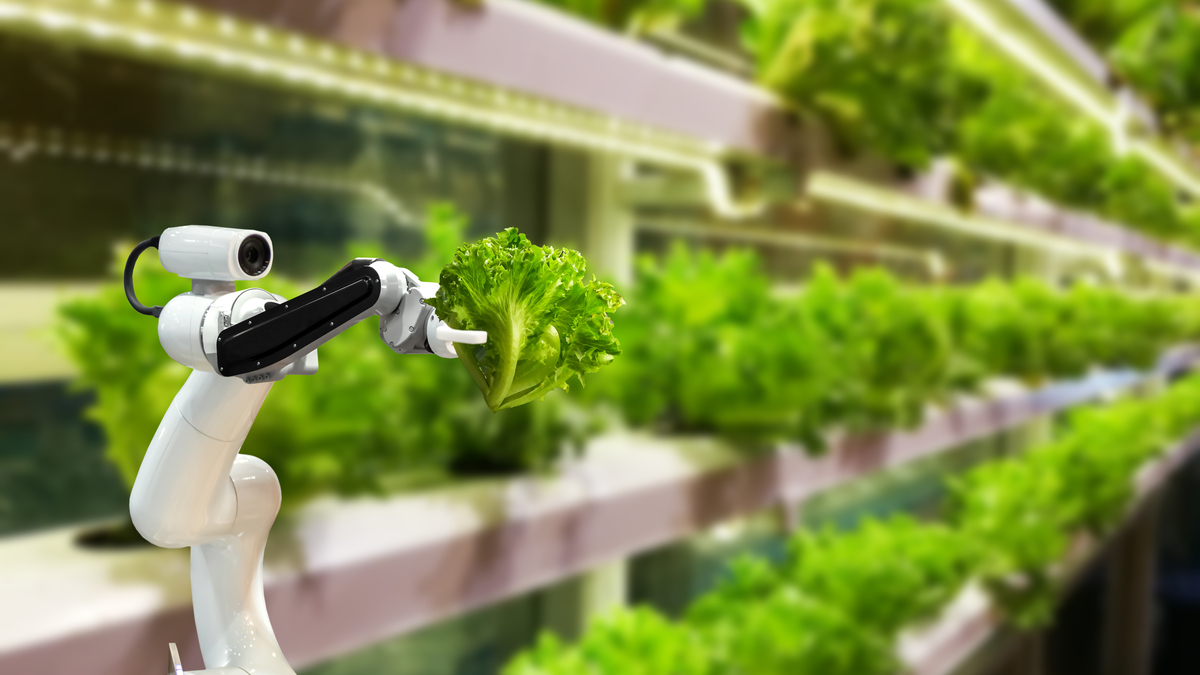Sustainable agriculture can be rightfully considered one of the keys to prosperity of any modern country. The development of humanity is impossible without all the benefits agriculture provides. And there is nothing surprising that this seemingly traditional and even conservative branch of the world economy also absorbs modern tech, successfully applying them on farms and achieving excellent results.
Manual labor in modern agriculture is used less and less often, but technical means are integrated almost everywhere to increase labor efficiency, automate processes, and significantly increase farm productivity. New agtech tools can easily analyze soil and crop, track weather patterns, “tell” farmers when crops need fertilizing or watering, and when the crop is ready for harvesting.
New tech advancements are making farms more efficient, overall improving the sustainability of agriculture. Modern development in GPS, AI, satellite monitoring, drones, robotics, and other tech allow growers to produce more products at much lower expenses and with less resources needed. As today’s consumers worldwide prioritize healthy and nutritious food, sustainable agriculture is what helps farmers satisfy this demand.
In this piece, we will cover most tried-and-true agtech tools that cater to modern farmers.
Satellite Monitoring
The use of daily high-resolution satellite imagery enables farmers to track soil and plant health through the span of crop cultivation. With the help of different software that collects and analyzes this imagery, farmers can visually see what occurs on the field to make reliable decisions on the quality of applied chemicals in different field zones, plan irrigation, tillage, and other activities. And all that without having to go into the field.
Among the main benefits of satellite monitoring are:
- Quick reaction to emerging problems thanks to accurate and relevant data
- Detection of weather threats
- Smart crop rotation planning based on crops performance in different fields
- Easy implementation of VRA approach thanks to remote analysis if all field areas
- Remote fields management
- Saved time and human resources on fields monitoring
- Reduced production costs thanks to smart application of water, fertilizer, etc.
Livestock Sensors
Sensors and devices for smart livestock health tracking allow for keeping an eye on several animals simultaneously, revealing their physiological state.
Cases of individual monitoring of animals include:
- Equipping pigs with acoustic sensors. These sensors can indicate respiratory illness.
- Equipping cattle tails with sensors. The devices suggest the best time to mate. The sensor sends notifications to the farmer. Besides, this lowers the cattle death rate.
- Use of internal sensors for cattle. The temperature sensor is located in the stomach of the cow. It is only activated when the temperature or acidity rises. This allows the farmer to recognize diseases immediately.
- Use of smart milking machines. This leads to an increase in milk yield and increases the life expectancy of animals
It is also important to track the location of the cattle. Location sensors and GPS tracking help with this. Drones have not yet proven their effectiveness, but they can find lost animals.
Autonomous Vehicles
Robotic tractors come in a wide variety of shapes and sizes, and are classified by functionality:
- Cabless tractors. These are less expensive as there is no driver’s cab. The control is carried out in a remote mode.
- Fully or partially autonomous tractors. In the case of full automation, human participation is not required at all, however, in semi-autonomous tractors, the driver can get it into the field and leave the cab to let the tractor do its job on its own. Another option for using semi-autonomous tractors is to work in tandem “man-robot”: while the driver controls one tractor manually, the second, parallel moving machine, repeats the actions of the leading tractor.
Air Compressors
Just like a plow or a tractor, an air compressor is a valuable tool on a farm. It is already used for a wide range of applications, and the search continues for more innovative agricultural air compressor implementations.
Among the applications of an air compressor on a farm are:
- Vehicles’ tires inflation
- Equipment cleaning
- Plants spraying
- Cleaning of production areas
Drones
The use of drones in almost every sector of the economy is growing fast, but drone usage in the agricultural industry is especially booming. From scouting to security, drones use has become more ubiquitous on large and small farms in recent years. The information gathered by drones on farms is often used to enable smarter agronomic decisions based on accurate and relevant data. By monitoring the current state of crop and soil health, farmers can efficiently plan different field activities to achieve the best possible yields.
Aquaponics
Aquaponics is a specific ecosystem in which three types of living organisms are involved: aquatic animals (usually fish), plants, and bacteria. This agricultural production technology is considered environmentally friendly. It works on the principle of symbiosis between fish and plants: fish provide nutrition to plants, and plants purify water for the fish.
The essence of the method is the use of waste products of aquatic animals (fish) as a nutrient for plants. Aquatic animals emit waste products that are toxic to themselves: nitrogen, potassium, phosphorus compounds, carbon dioxide. The accumulation of these substances in water is a major problem both in a closed system of industrial aquaculture and in a simple aquarium. But what is toxic to fish is perfect for plants. And in this case, this triad is used for a hydroponic plant nutrient solution. So, in aquaponics, the seemingly insurmountable problem of industrial aquaculture is solved by itself: the waste products of fish are utilized by bacteria and plants.





